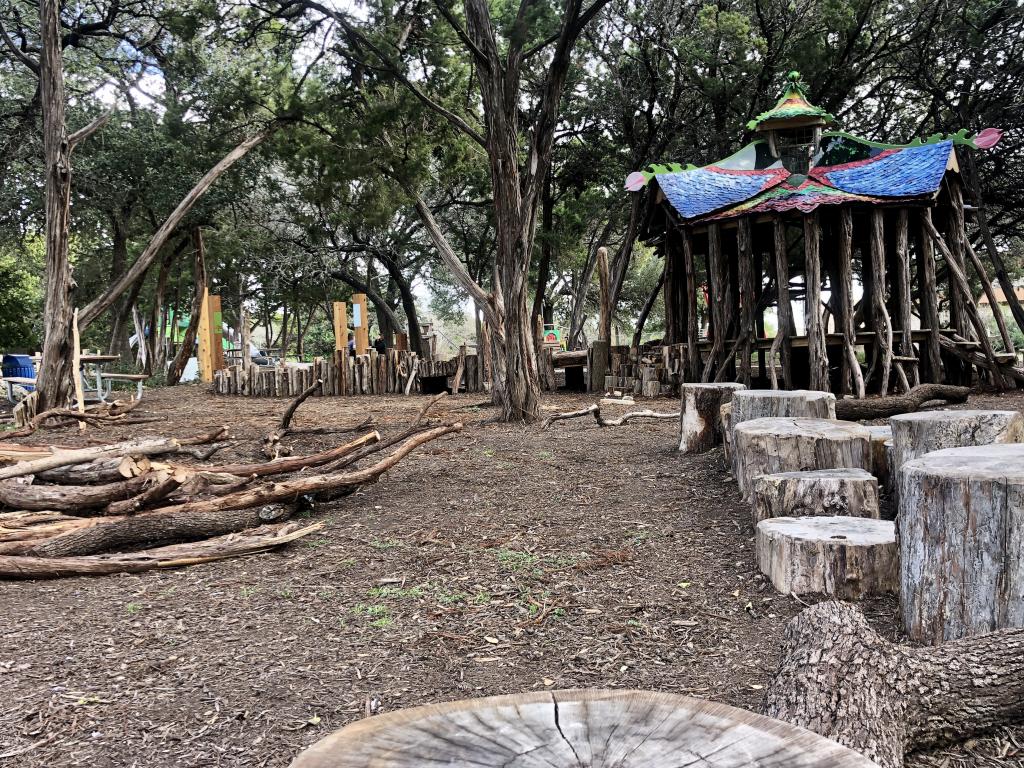Nature in Early Childhood

Walnut Creek Metro Park Playground
Austin Parks and Recreation recently installed its first nature play space in conjunction with a traditional playground replacement at Walnut Creek Metropolitan Park.Located in North Austin, this area of the city is categorized as nature deficient based on the City’s nature equity mapping tool. The Cities Connecting Children to Nature initiative defines nature play as any type of play that involves the interaction with or use of objects that nature provides.
As the first nature play space housed in a city park, the playground at Walnut Creek Metro Park provides an accessible playground for children of all ages and abilities in north Austin to explore their natural environment. The traditional design features a loop exploration path through a sensory garden, rubber safety surface with a variety of ground-level play opportunities, nature-inspired design, and the nature play space with the iconic Fairy Pavilion structure created by credit James Talbot, re-homed from the Lady Bird Johnson Wildflower Center’s Fortlandia exhibit as its signature feature.
A 4-year-old boy pounds a branch on a round slice of tree trunk, known as a “tree cookie.” Realizing he can make music, he smiles and begins to pound in rhythm. Across the yard, another group of preschoolers follow a teacher along a log on the ground. The kids hold their arms wide, balancing and following directions. Ahead of them are children who are jumping from rock to rock, squealing as one kid yells “ground is lava!”
This scene doesn’t happen out in a forest or far off in a distant natural environment. It can–and does–happen in the hearts of cities across the country, adjacent to concrete yards and parking lots. Outdoor experiences like this happen because city leaders bring together collaborative teams who understand the importance of connecting young children to nature on a regular basis.
“The ages of zero to five are such a foundational time in a child’s life,” said Vera Feeny, Senior Program Specialist, Children and Nature at the National League of Cities (NLC). “We know that time in nature offers many benefits. Young children living in cities deserve access to these benefits.”
Across the U.S., cities are working to connect kids to nature during their early developmental years, inspired by research indicating that providing young children, ages zero to five, with regular access to nature improves physical and mental health, develops social emotional skills and better prepares children for school. It also helps children develop connections to nature and their communities.
“The benefits of nature connection align with many city priorities,” said Feeny. “Nature-based benefits complement and support goals related to education, equity, sustainability, community health, park expansion and so much more.”
